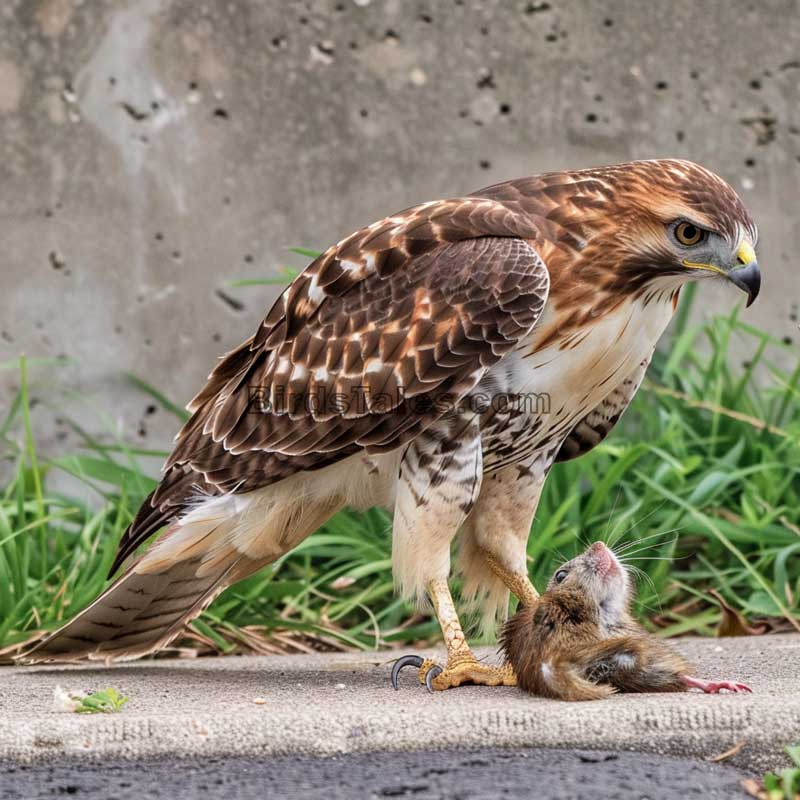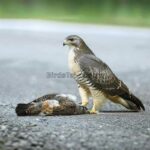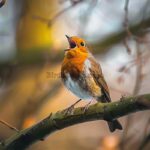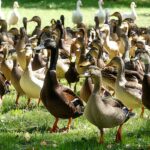Small Mammals as Prey
Hawks hunt a variety of small mammals.
Mice and voles are frequent targets.
These tiny creatures are easy to catch and provide essential nutrients.
Hawks also go after rabbits and squirrels.
These mammals are more challenging to catch but are a valuable food source.
In urban areas, rats are a common prey.
Hawks adapt quickly to available food.
Hunting Techniques for Mammals
Hawks use several methods to catch their prey.
They have keen eyesight, allowing them to spot small movements from far away.
Swift flight aids in the surprise attack.
Hawks often swoop down quickly, grabbing their prey with sharp talons.
Some hawks use a perch and wait strategy.
They sit quietly, watching for the right moment to strike.
This technique is effective in forests and open fields.
Hunting in pairs can also be seen, where one hawk flushes out the prey while the other captures it.
This teamwork ensures a higher success rate.
Hawks are fierce hunters. These raptors are on the lookout for their next meal. Their diet is diverse, but one…
Birds in a Hawk’s Diet
Hawks are also known to hunt other birds.
They target small songbirds and larger species like pheasants.
The variety of bird prey depends on the hawk species and their location.
Cooper’s hawk and sharp-shinned hawk are specialists in bird hunting.
They use their agility and speed to outmaneuver their avian prey.
Hawks as Avian Predators
Hawks exhibit territorial behavior when hunting other birds.
They defend their hunting grounds fiercely.
Opportunistic hunting is also common.
Hawks take advantage of vulnerable birds, such as those injured or sick.
Their predatory behavior includes stealth and surprise.
They often use cover like trees or buildings to hide before launching an attack.
This element of surprise gives them an edge.
Red-tailed hawks also prey on birds but tend to focus on ground birds like quail and pheasants.
Hawks are fierce hunters. These raptors are on the lookout for their next meal. Their diet is diverse, but one…
Reptiles and Amphibians
Reptiles and amphibians are a significant part of a hawk’s diet.
Hawks eat snakes, lizards, frogs, and toads.
These creatures are abundant in many habitats, providing a steady food source.
Regional variations in diet occur.
In desert areas, hawks may eat more lizards.
In wetter regions, frogs and toads are more common.
Some hawks even hunt venomous snakes, showing their fearless nature.
Seasonal Diet Changes
The diet of hawks changes with the seasons.
Summer offers a bounty of reptiles and amphibians.
These creatures are more active and easier to find.
In winter, food becomes scarce.
Many prey animals hibernate or hide from the cold.
Hawks then rely more on small mammals and carrion.
This seasonal shift ensures their survival.
Adaptability is key for hawks.
They switch prey types as needed, ensuring they have enough to eat year-round.
Hawks are fierce hunters. These raptors are on the lookout for their next meal. Their diet is diverse, but one…
Insects and Invertebrates
Insects and invertebrates play a significant role in a hawk’s diet, especially for younger hawks learning to hunt.
Crickets, grasshoppers, dragonflies, and moths are common targets.
These insects provide essential proteins and nutrients, crucial for growth and energy.
Hawks also consume various invertebrates like crayfish and prawns when available.
These tiny creatures may seem insignificant, but they are a vital part of the hawk’s diet.
Insects are plentiful and easier to catch, making them an excellent food source, particularly during times when larger prey is scarce.
Insect Hunting Techniques
Hawks have unique methods for catching insects.
Some hawks, like the kestrel, hover in the air to spot their prey before diving down to catch it.
Others might swoop low over fields, using their sharp talons to snatch insects mid-flight.
Perching is another common technique; hawks will sit on branches or wires, waiting for insects to come within striking distance.
Insects are quick, so hawks need to be even quicker.
This practice helps hone their reflexes and precision.
The nutritional benefits of insects are substantial, providing the necessary energy for the hawk’s active lifestyle.
Scavenging: Hawks and Carrion
Hawks are not just hunters; they are also opportunistic scavengers.
They consume carrion, which includes dead animals they come across.
This behavior is more common in urban areas or during harsh seasons when hunting live prey becomes challenging.
Carrion provides a reliable food source, especially when freshly killed animals are scarce.
Hawks have been seen sharing carrion with other scavengers like vultures and foxes.
This ability to scavenge highlights their adaptability and survival skills.
Role of Scavenging in Ecosystem
Scavenging is essential for the ecosystem.
By eating carrion, hawks help clean up the environment, preventing the spread of disease from decaying animals.
This scavenging behavior ensures that nothing goes to waste.
It also supports the food chain by allowing smaller scavengers to access leftovers.
Hawks play a pivotal role in maintaining ecological balance.
Their ability to scavenge complements their hunting, showcasing their importance as both predators and cleaners of the ecosystem.
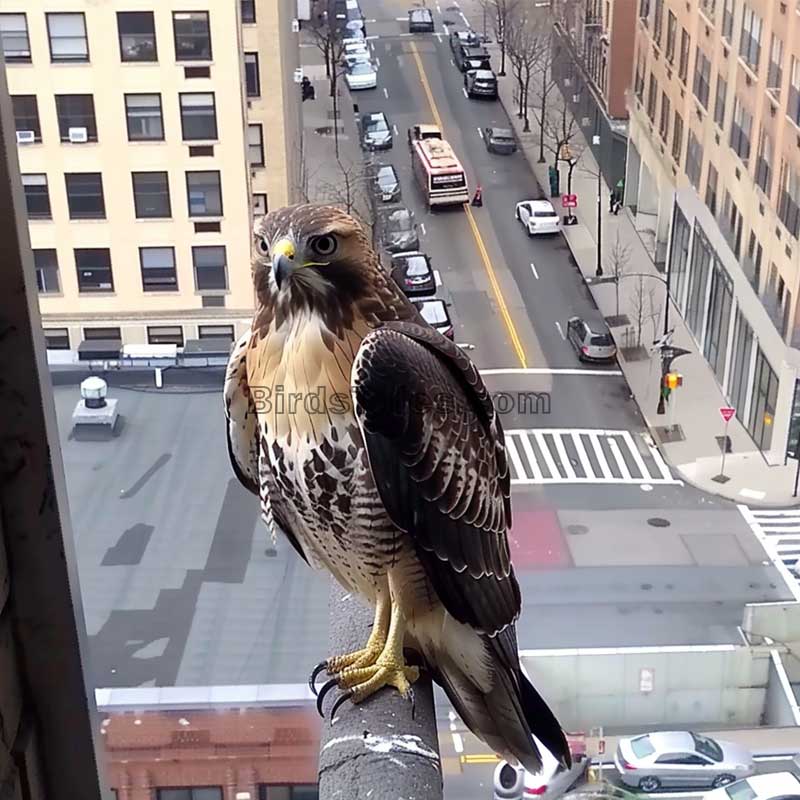
Urban Diet: Hawks in Cities
Hawks have increasingly moved into urban areas, adapting their diet to available food sources.
In cities, they hunt pigeons, rats, and squirrels.
Urban environments provide a unique blend of challenges and opportunities for hawks.
The abundance of prey in cities is a boon, but the hustle and bustle present new hurdles.
Hawks have adapted to these settings by changing their hunting strategies and learning to navigate the urban landscape effectively.
Challenges and Opportunities in Urban Areas
Urban areas pose challenges such as traffic, buildings, and human activity.
However, hawks are nothing if not resourceful.
They have learned to hunt in parks, alleys, and even backyards.
Cities provide a steady supply of food, but the dangers are also significant.
Hawks must be wary of cars, glass windows, and other urban threats.
Despite these challenges, urban areas offer opportunities for hawks to thrive.
Cooper’s hawks are particularly successful in cities, showcasing their adaptability.
Hawks and Larger Animals
While hawks primarily hunt smaller prey, there are instances where they target larger animals.
Foxes, coyotes, and even small pets can sometimes become part of a hawk’s diet.
These occurrences are rare but not unheard of.
Hawks have powerful talons and beaks, capable of taking down surprisingly large prey.
Their ability to carry prey, sometimes larger than themselves, is remarkable and demonstrates their strength and skill as predators.
Predatory Interactions
Hawks often interact with other predators, leading to complex dynamics.
They may compete with coyotes and foxes for the same prey.
These interactions can influence their hunting behaviors and diet choices.
Hawks might also scavenge from kills made by larger predators, taking advantage of the situation.
These predatory interactions highlight the hawk’s role in the food web.
They are not just solitary hunters but part of a broader ecological network where competition and cooperation coexist.
Conclusion on What Do Hawks Eat
Hawks have a diverse diet that includes mammals, birds, reptiles, amphibians, insects, and carrion.
This variety is essential for their survival and the balance of the ecosystem.
Understanding their diet helps us appreciate their role in nature.
